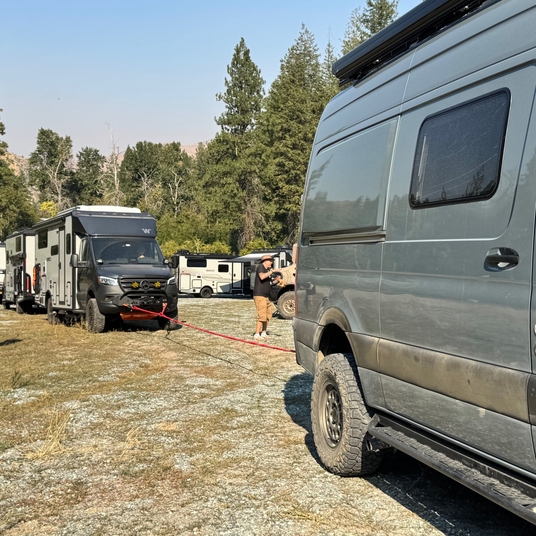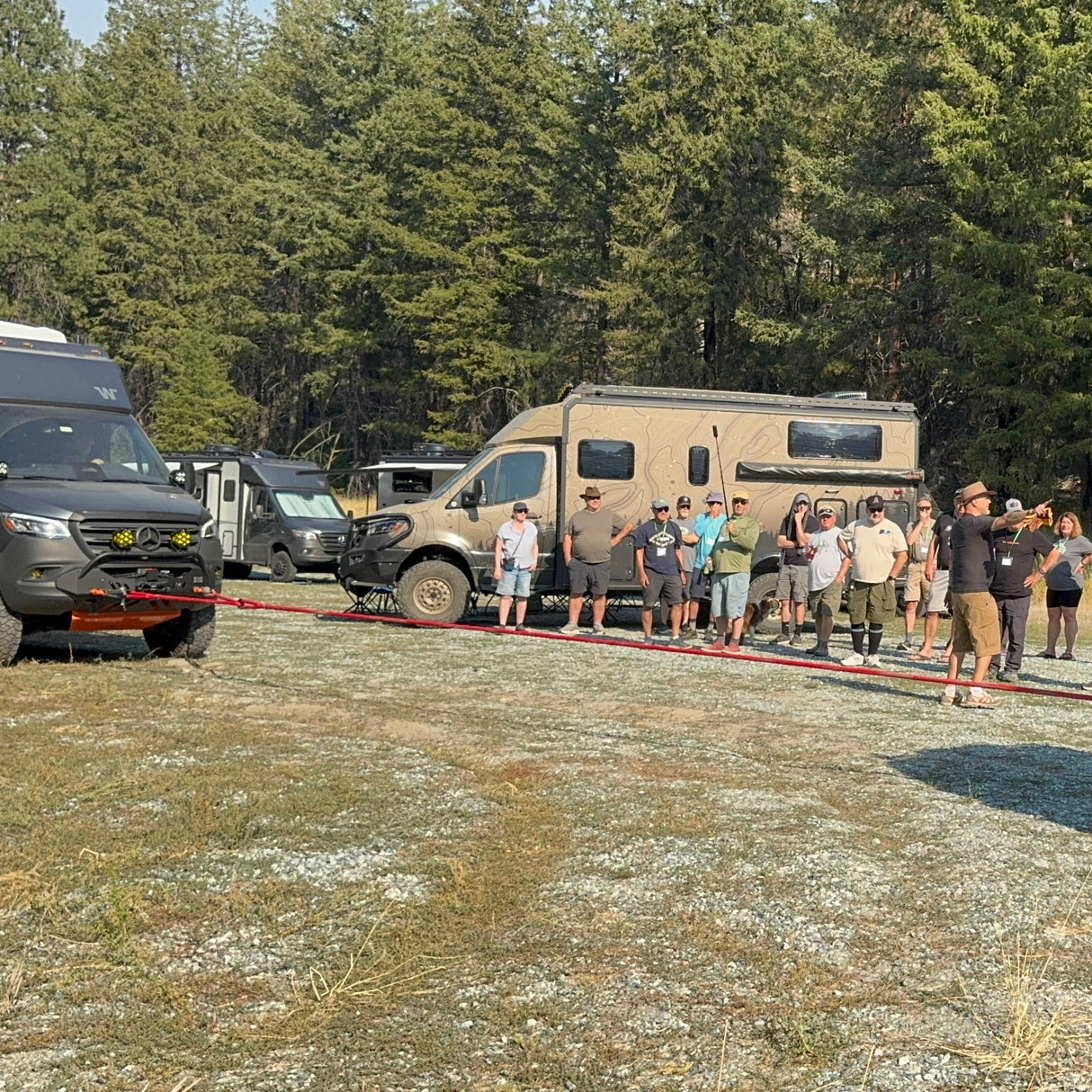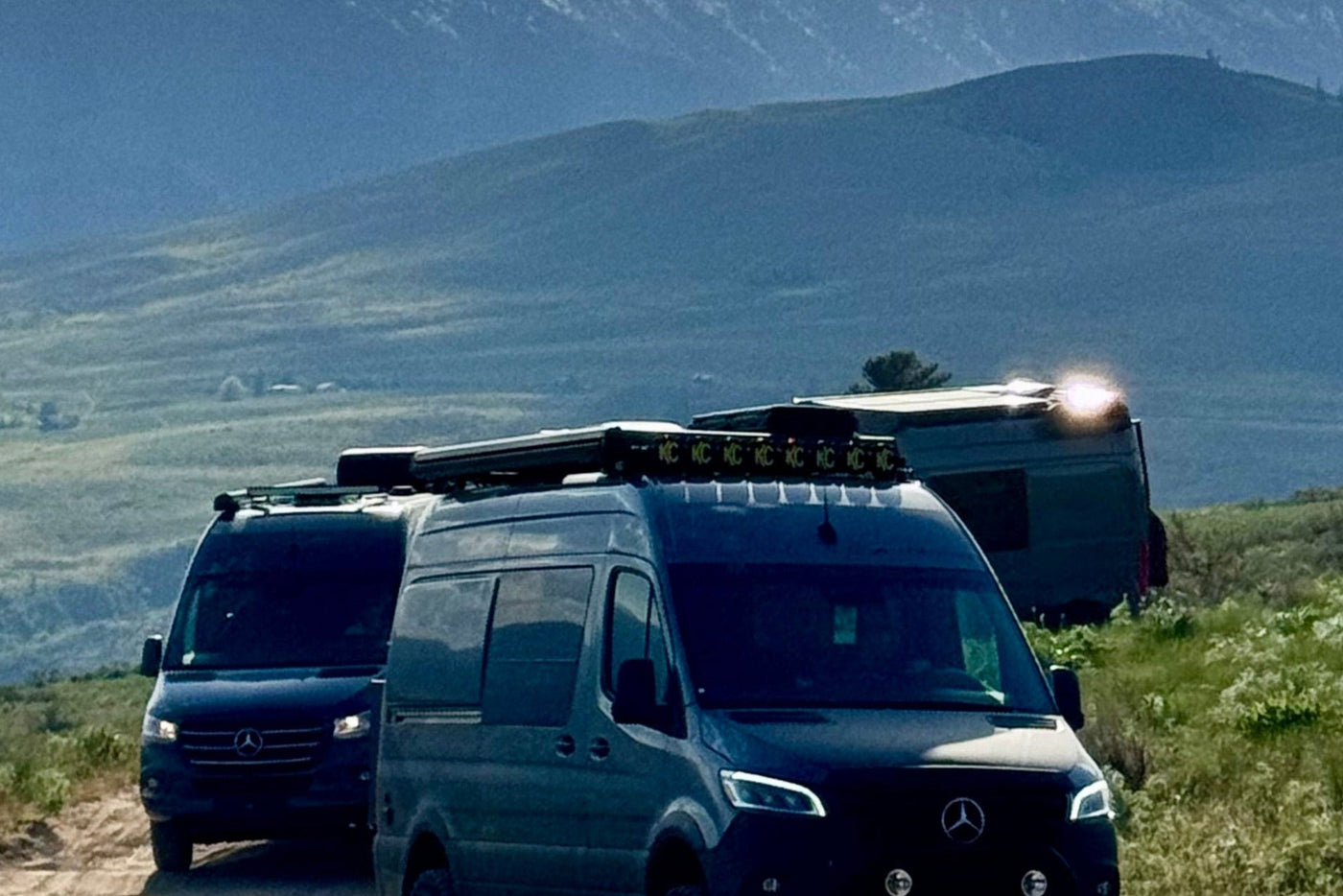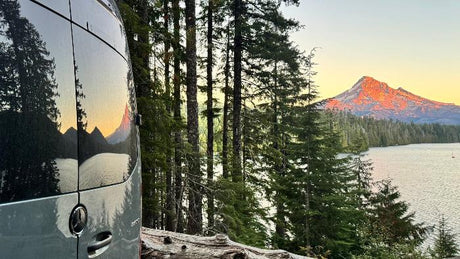Can't make this event?
Sign up for more upcoming events! 2025 has new adventures for you.
Empowered to go farther, smarter
Master professional towing and self recovery techniques for Sprinter and adventure vans
Course Overview
Towing & Recovery is a hands on, six hour training that teaches new van owners the full spectrum of towing and off pavement recovery. We focus on correct gear selection, safe rigging, load calculations, and real world decision making for heavy vehicles. This course builds practical skill through progressive reps and live scenarios so you leave with confidence and repeatable process.
What You Will Learn
Foundations of Safe Towing
Learn how to plan a tow from assessment to execution.
Key takeaways:
- Understanding vehicle ratings including GVWR, GAWR, GCWR, and how they limit towing capacity
- Hitch classes, receiver ratings, and the difference between tongue weight and gross trailer weight
- Proper chain and breakaway setup plus brake controller basics and trailer brake testing
- Trailer loading, cargo balance, and tongue weight targets to reduce sway
- Pre tow inspection and route selection for gradients, tight turns, and traction changes
Recovery Physics and Load Calculations
Build a working understanding of forces before you pull.
Key takeaways:
- Stuck factor, slope, and surface friction and how they affect required pull force
- Calculating working load limits and required minimum breaking strengths for heavy vans
- Vector forces in multi point rigging and how angles multiply load
- When to escalate from traction aids to kinetic pulls to winching
Recovery Points and Hardware Integrity
Select and verify safe attachment on modern vans.
Key takeaways:
- Identification of factory recovery points and safe aftermarket options
- Correct use of soft shackles and bow shackles and when to use each
- Equalization with bridles to distribute load and protect mounting points
- Protection of bodywork, cooling systems, and driveline during pulls
Straps, Kinetic Ropes, and Controlled Pulls
Use the right tool for the situation.
Key takeaways:
- Static tow straps versus kinetic ropes and their correct use cases
- Building a controlled kinetic recovery with proper length, stretch, and approach speed
- Managing traction and throttle to avoid shock loading and equipment damage
- Spotter communication, hand signals, and safe zones for bystanders
Winching Fundamentals to Advanced Techniques
Operate your winch with precision and margin.
Key takeaways:
- Steel versus synthetic line care, inspection, and safe handling
- Single line pulls, double line pulls, and redirects using pulleys
- Anchor selection including live anchors and equalized natural anchors
- Line protection, tensioning, and use of dampers for energy management
- Multi point rigging, side recoveries, and complex angles for confined terrain
Traction Boards and Progressive Recovery
Combine tools for faster, cleaner extractions.
Key takeaways:
- Ramp building, board placement, and throttle control to reduce dig in
- Stacking boards with sand and snow techniques for heavy vans
- Integrating boards with tow straps or winch lines to reduce required force
On Road Incident Towing
Move a disabled vehicle safely and legally.
Key takeaways:
- Flat towing basics versus trailer transport and when to choose each
- Wheel lift and dolly considerations for driveline protection
- Securing a van on a trailer with four point tie downs and proper strap angles
Equipment Selection for Heavy Vans
- Build a loadout that matches your vehicle weight and terrain.
Key takeaways: - How to size ropes, straps, shackles, and pulleys using WLL and MBS
- Essential kit lists for minimum, medium, and maximum scenarios
- Compressor, gauge, and tire tools that support recovery and post recovery checks
- Stowage, organization, and inspection schedules for reliability
Why It Matters
Sprinters and adventure vans carry more mass than typical SUVs which increases loads on recovery points, straps, and anchors. That weight also changes towing dynamics, stopping distances, and trailer stability. We show you how to calculate real forces, choose correctly rated gear, and execute step by step so you protect people, vehicles, and equipment.
Why Learn With Us
New van owners often use underrated gear, attach to unsafe points, or misjudge the force required on slopes or in deep sand and snow. Our system replaces guesswork with formulas, checklists, and clean rigging so you can solve problems quickly and safely.
What You Gain
- The ability to assess a stuck vehicle and choose the fastest safe recovery method
- Confidence to rig single and multi line winch pulls with correct anchors and angles
- Practical skill using kinetic ropes and tow straps without shock loading
- Proven communication protocols that keep the team safe and efficient
- A personalized equipment plan sized for your van and travel terrain
Course Details
Duration: 6 hours
Format: Hands on instruction with scenario based drills and instructor demo rigs
Vehicle Types: Sprinter and adventure vans including all wheel drive and four wheel drive
Location: Training area near Seattle with sand, gravel, incline, and recovery stations
Group Size: Small groups to ensure multiple reps on your own rig
Prerequisites: None. We tailor instruction to your current experience.
Ideal For
- New Sprinter and AWD van owners who tow trailers or need self recovery skill
- Owners upgrading to winches, kinetic ropes, or advanced recovery gear
- Drivers who travel in sand, snow, mud, and mountain passes
- Anyone who wants a structured approach to towing safety and off pavement recovery

About Your Pack Leader
With over three decades of off-road experience and two decades dedicated to vehicle recovery, Ben Powell brings deep technical expertise and a proven teaching background.
For more than 15 years, he has served with King County Search & Rescue, where he has trained hundreds of first responders, volunteers, and off-road enthusiasts through professional recovery programs.
25+ years off-road recovery experience with overland vehicles, living in vans, boats, RVs, and expedition vehicles traveling off-grid, in all conditions.
Survival, medical response, and field operations expertise. Skills honed over decades of training and real-world application.
Interested in Private Coaching?
Frequently Asked Questions
Each Wolf Pack event is intentionally capped at a small number of vehicles (usually 5–10) to ensure a personal, high-quality experience. Registration is first come, first served.
We welcome Sprinter vans, adventure vans, Class B RVs, small overland builds, and similar adventure vehicles. Specific requirements are listed in each event description. Feel free to reach out if you're unsure whether your setup is a fit.
Yes! Passengers and partners are welcome unless otherwise noted for a specific event. We encourage bringing someone to share the experience.
In general, well-behaved dogs are welcome at most events. However, some locations or activities (like certain state parks, recovery trainings, or wildlife areas) may have restrictions. Pet policies will be clearly listed per event.
Wolf Pack events are designed to run rain or shine. We believe real adventure includes real conditions. In cases of extreme, unsafe weather (such as wildfires, floods, or severe storms), we will reschedule or refund as needed.
A packing list and tools list will be provided after registration, customized for each event. Expect to bring basics like food, water, fuel, sleeping setup, recovery gear (where applicable), appropriate clothing, and basic van necessities.
Due to the small group sizes and advanced planning, Wolf Pack event registrations are non-refundable within 30 days of the event. However, if you need to cancel earlier, or if we must reschedule due to weather or emergencies, we’ll work with you fairly.
If you can comfortably walk around a campground, crouch, lift light gear, and hike short distances on uneven ground, you’ll be fine. We adjust our pace to the group. No extreme hiking or climbing required.






